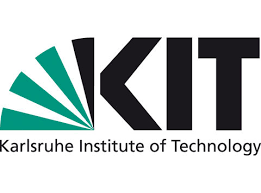Karlsruhe Institute of Technology: Biohacking against fungal infestation
Harmful fungi cause enormous damage in agriculture and are conventionally combated with toxic fungicides. In the DialogProTec project, researchers at the Karlsruhe Institute of Technology (KIT) together with partners from Germany, France and Switzerland have developed environmentally friendly alternatives in which the chemical communication of pathogens with plants is tricked. After completing the research work, the new technology is now ready for use.
First the leaves turn brown, then the whole vine dies in a short time: the fungal disease Esca threatens winegrowing in Europe and causes millions of dollars in damage to winegrowers every year. “The disease has been known in southern Europe since the Middle Ages, but has not played a major role in the past,” says Dr. Alexandra Wolf from the Botanical Institute of KIT, who coordinates the DialogProTec project. “Due to climate change, however, the fungus is now affecting many weakened plants that are suffering from climate stress.” In conventional crop protection, fungal diseases such as Esca are combated with toxic fungicides. In DialogProTec, the researchers have now developed a completely new approach that does not require any environmental toxins: “In nature, organisms interact through chemical signals. We managed to elucidate and manipulate some of the signals between host and pathogen,” says Wolf. This “biohack” is accurate, effective – and the ecological footprint is minimal.
To develop the new methods, the project has established a transdisciplinary research network under the leadership of KIT, in which plant sciences and fungal genetics are represented as well as microsystems technology, organic chemistry and agricultural sciences. About 20,000 fungal strains from the collection of the Institute for Biotechnology and Drug Research (IBWF, Kaiserslautern) and about 6,000 plant species from the KIT could be used.
On the trail of signal substances with high-tech
However, in order to identify the right signals and make them usable, the researchers did not work with whole plants and fungi, but with individual cells. A microfluidic chip developed jointly with the Institute for Microstructure Technology of the KIT served as the basis for a miniature ecosystem. “Cells of plants and fungi are placed on chips a few square centimeters in size in such a way that they do not touch each other, but can chemically interact with one another via a microfluidic flow,” says Christian Metzger from the Botanical Institute of KIT. “In order to make this interaction visible, we previously equipped the genome of the plant cells with a gene switch and a fluorescence gene. Whenever a chemical signal activates the immune system, we can measure a green glow.
Plant vaccination before the practical test
In their investigations, the researchers first decoded the chemical communication between fungi and plants that accompanies fungal infestation. Among other things, they identified signaling substances with which the fungus suppresses the plant’s immune response. “They are part of a chemical interaction that has developed over a long period of time and are produced as soon as the fungus perceives specific stress signals from the plant,” explains Professor Peter Nick, who heads the project and the Botanical Institute. The team then identified molecules that can be used to reactivate the immune response. “If you use them for crop protection, the plant can fight off the fungus in many cases. You can think of it like a vaccination for plants,” says Nick.
In the meantime, the innovative technology from DialogProTec is already on its way into practice and will soon be tested in the field. In addition to an alternative to fungicides, the project team also developed new approaches to promoting plant growth or controlling weeds. Signal substances could also replace toxic herbicides here in the future.
About DialogProTec
In addition to the KIT, the Albert-Ludwigs-University of Freiburg, the University of Strasbourg, the Institute for Biotechnology and Drug Research (IBWF) and the Research Institute for Organic Farming (FiBL) from Switzerland were involved in the research. The research was funded in the cross-border EU program Interreg Oberrhein. During the course of the project, a network of agricultural businesses (such as wine and fruit-growing businesses) and industry (crop protection and technology companies) was created, with which the researchers will continue to work together in the future.

